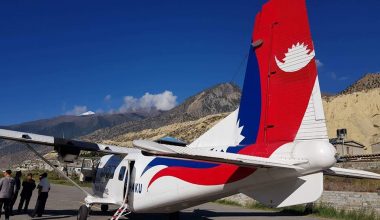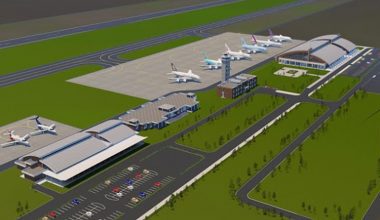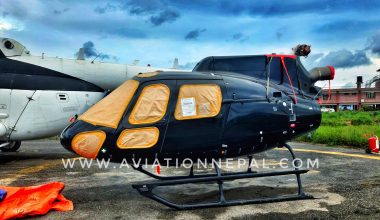I sometimes find myself wondering what the helicopters of the future will be like. Will they be super-fast, outstandingly comfortable, more like small airliners than today’s often rather functional rotary machines?

Indeed, some of the developments in more recent helicopters suggest that this might be the way things are going. For instance, the Agusta Grand, the current version of the A109, has a cabin that has been lengthened so that in the VIP version, you can have six seats in the back, or four seats and a drinks cabinet if you prefer. Similar developments have taken place in other recent rotary aircraft. So is this the direction in which things are developing? And, more importantly, is this the way they should go?
Read More: What is the Contribution of Tail rotor on Helicopter?

Firstly, let’s get one thing straight. If we’re talking about airliner-type speeds of Mach 1 or thereabouts, a really fast helicopter is an impossibility. One thing helicopters just cannot do fly fast. Indeed, the world record speed for a helicopter is a mere 217.5 kts, set at a European air show on August 6th, 1986, by a slightly modified version of the ZB500 G-Lynx, manufactured by GKN Westland Helicopters. And the theoretical top speed for a rotary-winged aircraft is only about 225 kts. This is quite complicated, but basically, the problem of high-speed helicopters is that the retreating blade has less and less airspeed as the helicopter speeds up. Eventually, it gets into what is known as a ‘retreating blade stall.’ This situation limits the top speed of a helicopter, and very little can be done about it.

So if helicopters of the future are not going to be fast, how will they be? In particular, what would it be good to see in them? Here is my wish list for helicopter changes over the next few years…
Many of my wishes are for improvements for the pilot, and generally, these relate to safety aspects. Safety should always come first in aviation, in my opinion. So firstly, once and for all, let’s get rid of carburetors in piston-engined helicopters. Admittedly, there aren’t many helicopters with piston engines, but they are still around in the Robinson R22, Robinson R44, Schweizer 300 series, and other small, cheaper helicopter types. After all, they save money, among other things. We don’t need to outlaw them, but let’s make them all fuel-injected. Most cases of engine failure in small helicopters are caused by carburetor icing, and there’s enough to think about when flying a helicopter without worrying about ‘carb’ heat all the time. We could save a lot of lives this way, so let’s do so.
Read More: What do helicopter mechanics do? Helicopter mechanics salary in USA
Moving on to turbine helicopters, I’d like to see how the start-up could be simplified for many of them. A significant number still starts similarly to the old (by helicopter standards ) B206 JetRanger. The procedure goes like this. After the usual ‘full and free’ checks and ensuring warning lights and other essential things are working, you turn on the battery, then activate the fuel pumps. You then check the turbine outlet temperature (TOT) to ensure it is below 150 degrees. Next, you engage the starter, wait until you have 15% on the gas producer (N1), then roll on the throttle. You now focus on the TOT gauge, making sure it doesn’t go over 810 degrees. If it does, you close the throttle fast while continuing to press the starter. Get this wrong, and you’ll have a ‘hot start,’ which means you fry the engine and have a very, very expensive bill. N1 continues to rise, and at 25%, the blades start turning. When N1 reaches 58%, the system is self-sustaining, and you can then take your finger off the starter. You wait about a minute for temperatures to stabilize, increase power to 70% N1, and bring the generator online. You can now open the throttle fully, and you’re ready to go flying.
That isn’t quite as complicated as it sounds, at least for an experienced pilot. But in the beginning, it is. Some rookie helicopter pilots have commented that they need at least four eyes to monitor all the dials! Insurance companies know how fraught it can be and how easily something can go wrong since many of them will not insure pilots without a large number of turbine hours. There must be an easier way, and there is. Most of the newer Eurocopter helicopters, such as the EC120, 135, 145, etc., have all the limitations mentioned above incorporated into one gauge, the First Limitation Indicator (FLI). This analog display integrates the T4, Ng (engine rpm), and torque readouts into one clear dial, labeled from 1 to 10. The numbers are arbitrary, but basically, when the dial goes above 9.6, you know you are close to the maximum power available and close to exceeding one of the above parameters. You don’t need to know which; you can simply fly the gauge. At 9.5, the numbers will change to a warning amber to remind you to lower the collective, and there is an aural warning as well, should it be required. So pilots can keep their eyes out of the cockpit, and those new to turbine helicopters don’t have to remember the limitations while scanning several different and unfamiliar gauges. The FLI is excellent; I loved it when I first tried flying the EC120, and I still do. So let’s have something similar in all helicopters.

Moving on to what might be called more mechanical or ergonomic issues, I’d like to see helicopters that are better designed for pilots of all shapes and sizes. OK, since I’m only 5 ft 2 ins, I’m somewhat prejudiced here. But for many helicopters, there is almost no way of reaching the rotors or some other parts of the aircraft for the preflight check, especially if you’re vertically challenged. It wouldn’t take an engineering expert to incorporate some steps into the fuselage, as is done on some rotary aircraft. Finding a ladder every time you want to preflight a helicopter isn’t practical or safe.

I have similar issues regarding the controls in the cockpit – or even getting into the cockpit. So if you have a helicopter with high skids, how about making sure that there is a step on the skids so that you can climb aboard without a mountaineering act being required. And once inside, the seat and pedals need to be easily adjustable for any size of the pilot. Some helicopters do this brilliantly, and I particularly recall the Mil MI-8, which isn’t particularly luxurious or modern but has seats and pedals that adjust a long way forward and aft. But many helicopters don’t, or you need a whole toolkit to move the pedals. Finally, things should be adjusted to move the seat doesn’t mean that you end up with the cyclic in an impossible position for comfortable use. This might all sound very complicated, but some helicopters manage it, so why not all?
That’s about it where the pilot is concerned, so now, what about the passengers. As I said earlier, larger helicopters are becoming more and more comfortable – and why not? But perhaps we need to look at passenger issues when it comes to some of the smaller ones.
Firstly, let’s try to make room for a small amount of luggage, even though space is at a premium in most two and three-seater helicopters, which aren’t designed for touring. But if the area beneath the seats is intended to be a crumple zone to collapse and protect the occupant in the event of an accident, let’s not compromise it. There needs to be a way of creating a small luggage area without affecting safety. As you’ll have gathered, for me, safety is paramount; everything else is secondary.
Next, let’s make sure that doors can be closed easily, opened easily, but locked if necessary. A door opening in flight is rarely a disaster, but it scares passengers witless, particularly if the pilot isn’t in a position to close it for them. We should make sure it can’t happen. And, as mentioned above, with respect to pilots, let’s make sure that all skids have steps where needed. Helicopter passengers aren’t always young and agile – and they shouldn’t need to be.
Those are most of the changes I’d like to see in helicopters of the future. I can think of one or two others, like maybe incorporating wire cutters into the aircraft’s nose to help prevent wire strikes and having more or better emergency warning horns and lights. However, there are disadvantages in all these types of changes unless they are carefully researched in advance; for instance, wire strike kits don’t always work that well, and it isn’t good for pilots to get complacent and rely on them if that’s the case. But the changes above, simple as they are, will do for starters. I hope to see some of them – may be even all of them – coming along in the next few years.






